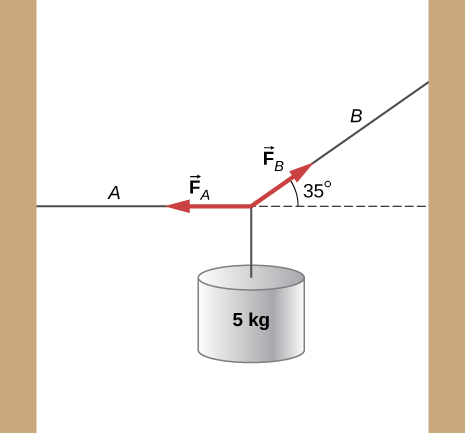Challenge Problems
A copper wire has a radius of and a length of 5.0 m. The wire is placed under a tension of 3000 N and the wire stretches by a small amount. The wire is plucked and a pulse travels down the wire. What is the propagation speed of the pulse? (Assume the temperature does not change:
A pulse moving along the x axis can be modeled as the wave function (a)What are the direction and propagation speed of the pulse? (b) How far has the wave moved in 3.00 s? (c) Plot the pulse using a spreadsheet at time and to verify your answer in part (b).
A string with a linear mass density of is fixed at both ends. A 5.0-kg mass is hung from the string, as shown below. If a pulse is sent along section A, what is the wave speed in section A and the wave speed in section B?

Consider two wave functions and . What is the wave function resulting from the interference of the two wave? (Hint: and .)
The wave function that models a standing wave is given as . What are two wave functions that interfere to form this wave function? Plot the two wave functions and the sum of the sum of the two wave functions at to verify your answer.
Consider two wave functions and . The resultant wave form when you add the two functions is Consider the case where , and . (a) Where are the first three nodes of the standing wave function starting at zero and moving in the positive x direction? (b) Using a spreadsheet, plot the two wave functions and the resulting function at time to verify your answer.